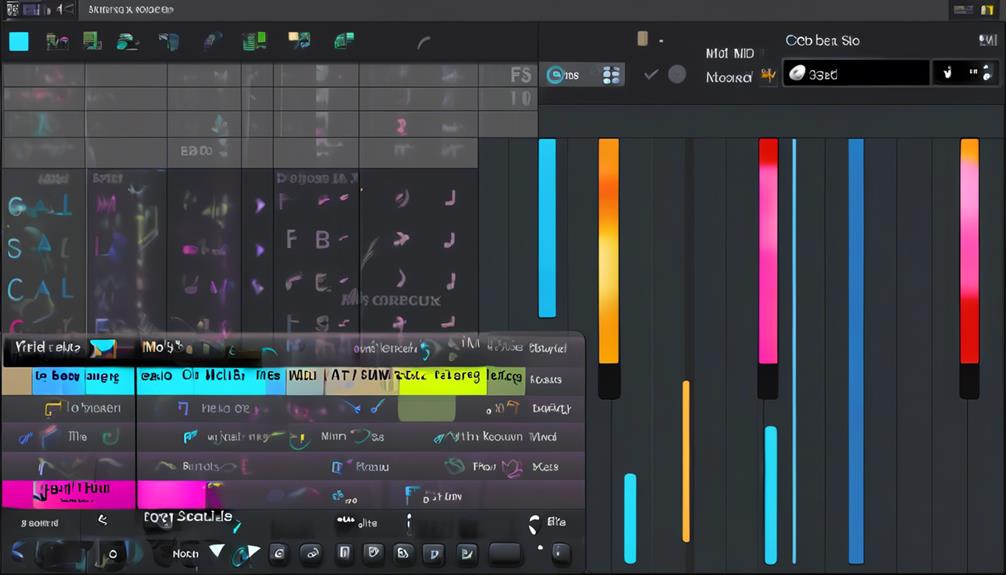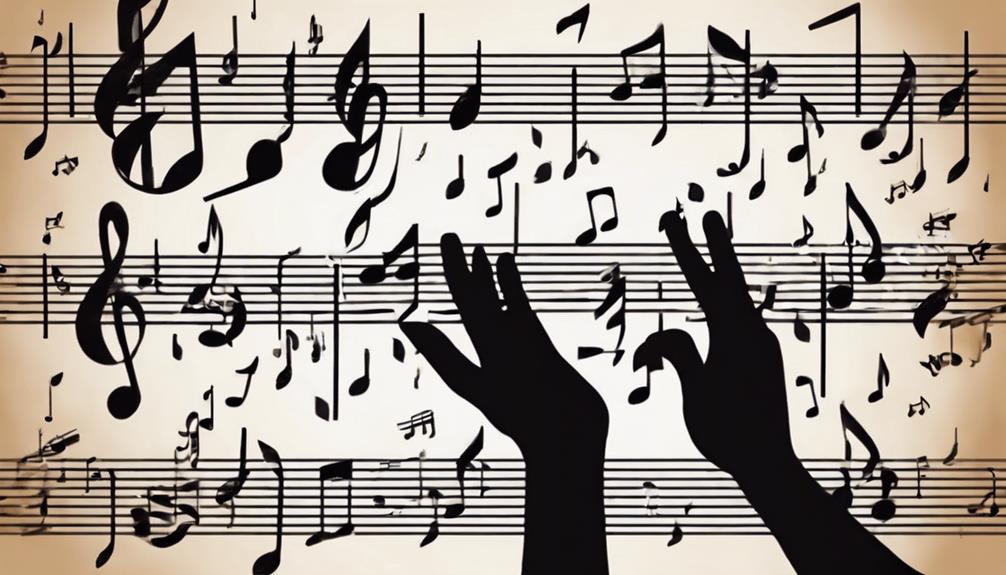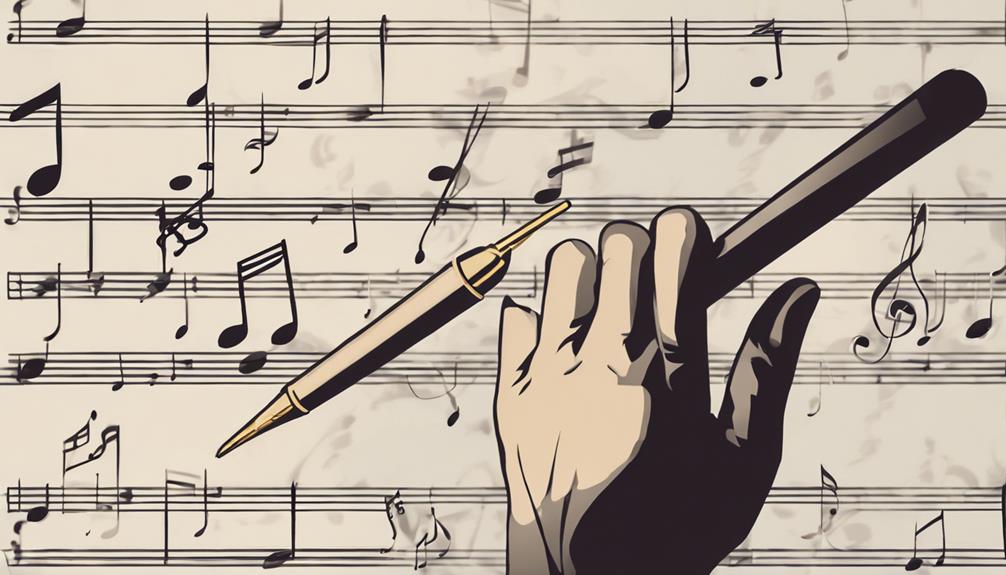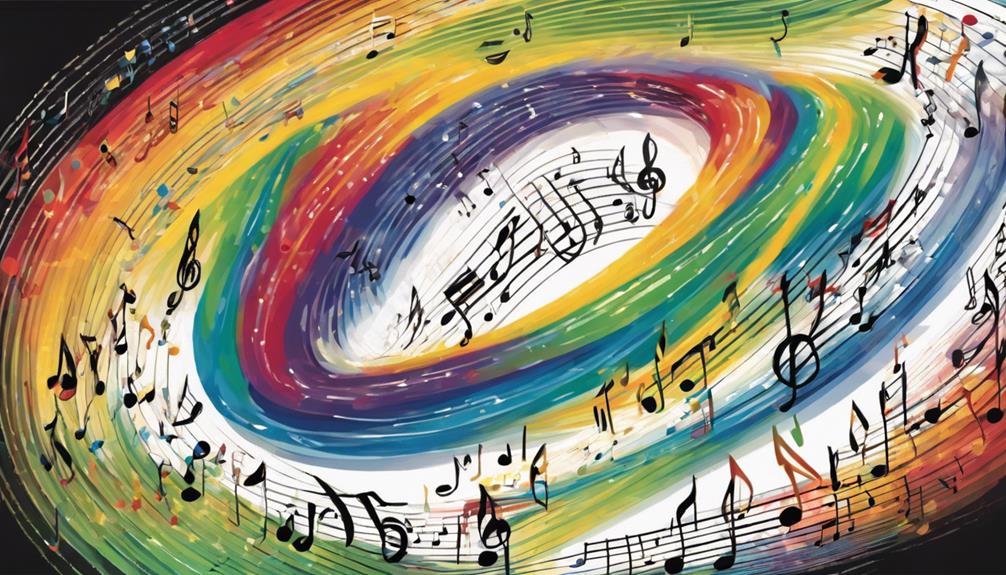No products in the cart.
While the vastness of a digital audio workstation (DAW) can be as daunting as a blank canvas to a painter, the application of basic music theory is the palette through which you can add color and life to your creations.
You don’t need to be a maestro to start laying down tracks that resonate with your artistic intent; a grasp of simple melodic structures and harmonies can elevate your music from a collection of sounds to a composition that speaks to the soul.
As you navigate the seemingly complex interfaces, remember that the principles of rhythm, melody, and harmony remain your steadfast allies. Consider this your starting point: by mastering a handful of foundational concepts, you can orchestrate digital arrangements that captivate listeners.
Now, let’s uncover how these six fundamental tips can transform the way you interact with your DAW, fostering a creative workflow that harnesses the full potential of your musical knowledge.
Key Takeaways
- Understanding melodic structures is crucial for constructing cohesive and compelling tunes in your DAW.
- Experimenting with chord extensions can add depth, complexity, and uniqueness to your compositions.
- Incorporating pedal tones can provide stability and structure to your arrangements, enhancing the overall listening experience.
- Applying rubato timing and changing keys can create dynamic shifts and evoke different emotions in your music, keeping the listener engaged.
Understanding Melodic Structures
To effectively craft captivating melodies in your DAW, you must first grasp the foundational principles of melodic structures. Melody mapping, a strategic approach to constructing tunes, plays a pivotal role in this process. It’s about visualizing the trajectory of your melody—considering the rise and fall, tension and release, and the emotional journey you want to take your listeners on.
Begin by sketching the skeleton of your melody. Use your DAW’s piano roll to plot out the key notes that define the contour of your melody. Think of these as waypoints that guide the listener’s ear through the musical landscape you’re creating.
Next, dive into Counterpoint basics to add depth and complexity. Counterpoint is the art of weaving independent melodic lines together. It’s crucial for creating a dynamic and textured sonic palette.
When you’re working in your DAW, consider how different melodic lines interact. Are they complementing each other, or are they competing for attention? Employ counterpoint to ensure that each line has its moment to shine, without overshadowing the main melody.
Harmonizing With Chords
Having established your melody’s framework, it’s essential to harmonize it with chords that enhance its musicality and evoke the intended emotions. Your Digital Audio Workstation (DAW) is a powerful tool for applying music theory, and harmonization is no exception. Here’s how to innovate with chords in your compositions:
- Experiment with Extensions: Don’t just stick to triads; add sevenths, ninths, or even thirteenth chords to give your harmony depth and complexity.
- Voice Leading Techniques: Use smooth transitions between chords to maintain a cohesive sound. Aim for stepwise motion between chord tones, especially in your top voice, to create a seamless melodic flow.
- Inversions for Interest: Alter the bass note of your chords with inversions to create different textures and keep the harmony engaging without changing the chord itself.
- Modulating Chord Progressions: Introduce fresh emotional landscapes by modulating to new keys. This can reinvigorate your track and offer a sense of evolution and surprise.
Utilizing Scales Effectively

Understanding scales is the bedrock of crafting compelling melodies and harmonies in your DAW, offering a roadmap for musical expression and creativity.
As you delve into your composition, familiarize yourself with scale modes. These are variations of the basic scales that can evoke different emotions and atmospheres. Utilize the Lydian mode to infuse a sense of ethereal uplift or the Phrygian mode to inject a mysterious, exotic vibe.
To ensure your notes align with the chosen scale, leverage pitch quantization. This feature snaps your MIDI notes to the correct pitches within the scale, eliminating the risk of dissonant tones that could disrupt your track’s coherence. It’s not just a safety net; it’s a tool that can accelerate your workflow and enhance your creative process.
Experiment with your DAW’s scale and pitch quantization functions. They can often suggest harmonic and melodic possibilities that you mightn’t have considered. By constraining your palette to a specific set of notes, you might find new patterns and sequences that resonate with your artistic vision.
Crafting Song Form
As you structure verses and choruses within your DAW, remember that each section should propel the song forward while reflecting the track’s emotional core.
Building dynamic transitions between these parts is crucial; they serve as the glue that maintains flow and interest.
Don’t overlook the power of breaks and bridges to inject variety and maintain listener engagement throughout your composition.
Structuring Verses and Choruses
When crafting verses and choruses, it’s essential to infuse each with distinct melodic and energetic qualities to ensure a dynamic song structure.
Contrast Energy and Melody: Craft your verses to complement yet stand apart from your choruses. This contrast is pivotal, as it keeps the listener engaged and emphasizes the song’s emotional journey.
Chord Progressions: Experiment with varying chord progressions to give each section a unique identity. This isn’t just about changing chords; it’s about crafting a narrative.
Instrumentation and Production: Utilize different instruments and production techniques to differentiate between the sections. This can be subtle or pronounced, but it must serve the song’s overall vibe.
Pre-Chorus Build: Implementing a pre-chorus can be a powerful tool for building tension and anticipation, leading to a more impactful chorus.
Building Dynamic Transitions
To create a seamless flow in your song, it’s crucial to master the art of building dynamic transitions that guide the listener from one section to another. Employ risers, drum fills, and filter sweeps to craft transitions that captivate through creating tension and release. Automation is your ally, enabling you to manipulate volume, panning, and effects, adding texture and depth to each passage.
Experiment with varied instrumentation and dynamic shifts to delineate your song’s structure. Don’t underestimate the power of silence; strategic pauses can amplify the impact of your transitions. Maintain coherence throughout your arrangement, ensuring each transition feels like a natural progression. It’s this attention to detail that will keep your listeners engaged and eager for what comes next.
Utilizing Breaks and Bridges
Building on the foundation of dynamic transitions, let’s now focus on crafting your song form with the strategic use of breaks and bridges to keep listeners captivated. Here’s how you can innovate:
- Creating Tension with Breaks:
Insert breaks at pivotal moments to build suspense and captivate your audience.
- Crafting Seamless Transitions with Bridges:
Design bridges that not only connect sections but also introduce fresh elements to your track.
- Contrast and Variety:
Use bridges to inject contrast, keeping your arrangement unpredictable and engaging.
- Experimentation:
Test various break and bridge combinations to discover what energizes your music.
Orchestrating Digital Arrangements
Mastering the interplay of scales and chords is fundamental to orchestrating compelling digital arrangements that resonate with listeners. You’ll find that digital layering and creating atmospheric textures can significantly enhance the emotional landscape of your productions.
When you experiment with different instruments and soundbanks, the timbral qualities can interact in unexpected, yet harmonious ways, leading to richer, more immersive soundscapes.
To achieve this, immerse yourself in the vast array of plugins available. They’re your toolkit for sculpting unique sonic experiences. Utilize musical keys and samples judiciously, ensuring each element complements the other, weaving together a cohesive auditory tapestry.
Push beyond the basics by incorporating chord extensions to add color, pedal tones for a sense of grounding, and rubato timing for expressive fluctuations. Don’t shy away from changing keys to maintain listener interest and build dynamic shifts within your arrangements.
Incorporating Ear Training


As you orchestrate digital arrangements with proficiency, honing your ear training skills will further refine your ability to craft nuanced compositions in your DAW. Improving musical perception isn’t just about reading notes on a page; it’s about recognizing the subtleties in sound that can make or break a track. By developing a keen ear, you’ll gain the insight needed to manipulate elements within your software to their fullest potential.
Here are ways to incorporate ear training into your routine:
- Interval Recognition: Start by identifying the distance between two notes. This fundamental skill will improve your ability to create harmonies and melodies that are both complex and compelling.
- Chord Identification: Learning to quickly discern chord qualities and progressions will allow for more innovative and emotive arrangements, enhancing the depth of your projects.
- Rhythmic Precision: Develop an acute sense of timing by tapping into different rhythmic patterns and signatures, vital for programming intricate beats and grooves.
- Aural Transcription: Try recreating songs by ear to improve your overall musical understanding and DAW proficiency. This practice encourages a hands-on approach to applying ear training techniques within your workflow.
Dedicate time to these exercises, and you’ll notice your musical ideas flowing more instinctively. Embrace the innovation that comes from a well-trained ear—it’s essential for the modern composer.
Frequently Asked Questions
Do Music Producers Need to Know Music Theory?
You don’t need music theory to produce, but it expands your creativity beyond genre constraints and boosts your instrument proficiency, fostering innovation in your compositions. It’s a practical tool for experienced producers.
How Do You Practice Music Theory?
You’ll practice music theory by drilling chord progressions and honing ear training. Dedicate time to recognize intervals and replicate songs, gradually innovating your sound with complex harmonies and aural skills.
What Is the Basic Music Theory of Music Production?
You’ll master music production by understanding chord progressions and scale utilization, key components for crafting innovative sounds and harmonies that resonate with listeners seeking fresh auditory experiences.
Do I Need to Know Music Theory to Make Beats?
You don’t need formal music theory for beatmaking, but knowing the basics can enhance your intuitive composition, helping you craft innovative beats with a technical edge in your DAW. Keep experimenting!
Conclusion
You’ve got the basics down; now harness them in your DAW to craft compelling music.
Grasp melodic structures to lead listeners through your sonic story. Harmonize with chords that resonate emotionally. Use scales to color your tunes and shape the sonic palette.
Structure your songs to maintain interest, and orchestrate arrangements for depth. Keep honing your ear — it’s your secret weapon.
Dive in, experiment, and watch your music theory knowledge transform your tracks.




